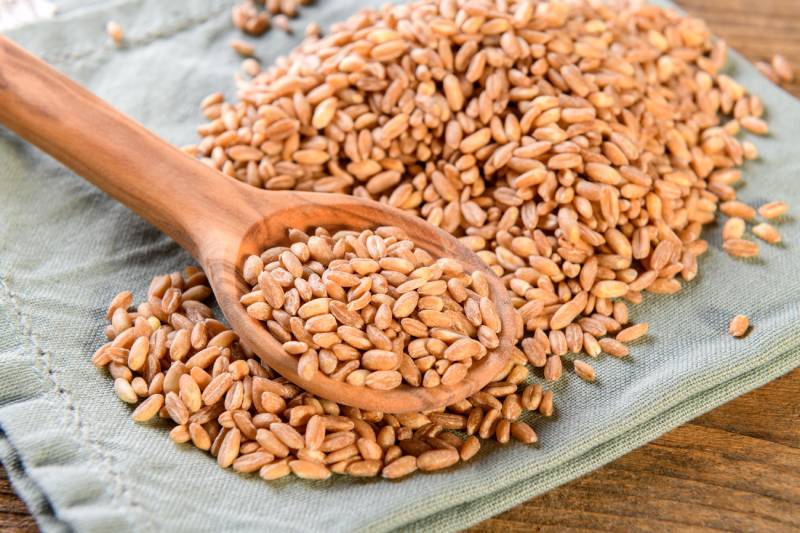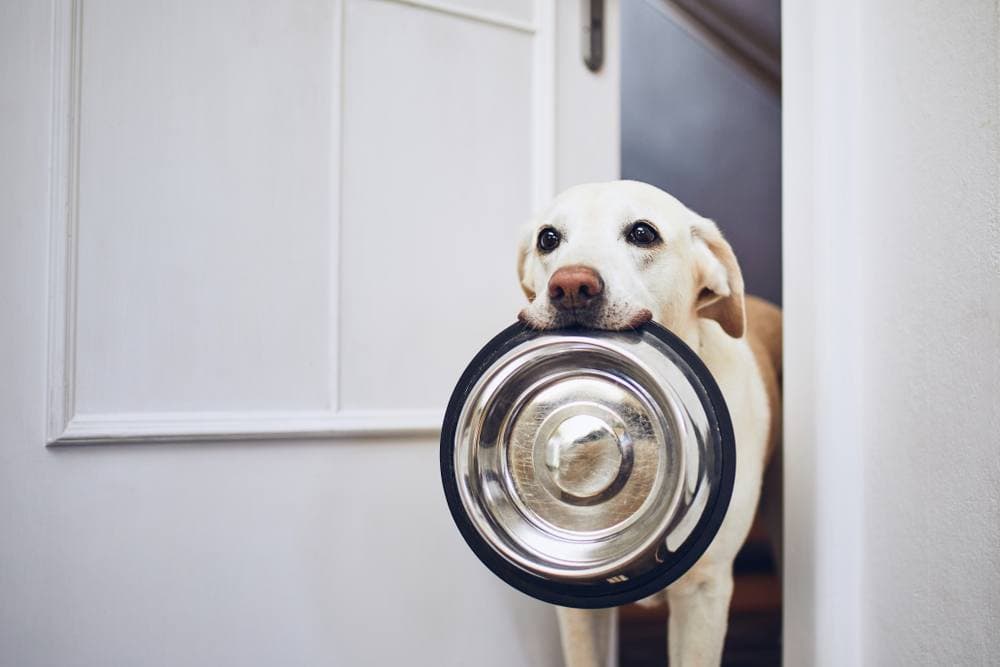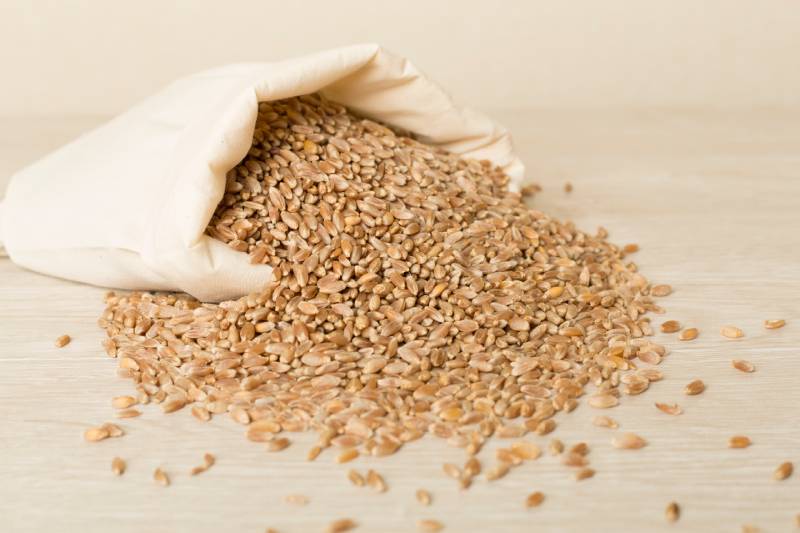Can Dogs Eat Farro? Vet Reviewed Health Concerns & Advice
Updated on

Click to Skip Ahead
Many dog owners overlook the value of certain grains in their dog’s diet, even though they are included in numerous dog foods. Despite what you may have heard, grains can be beneficial to dogs when fed appropriately, and some grains are more nutritious than others.
Farro, also known as “emmer wheat,” is an ancient grain high in protein and fiber that looks similar to barley. It is commonly used in Mediterranean cuisine to make tasty soups and side dishes meant for human consumption. Farro is also a non-toxic and nutrient-rich superfood that can have a place in your dog’s diet, with very few limitations.
Feeding Farro to Dogs
Here’s what you need to know before feeding Farro to your dog.

Safety and Potential Risks
Farro is generally safe for most dogs to eat if it is served plain and cooked. It is not considered toxic to dogs and the only risk associated with Farro is that some dogs might be allergic to it. If your dog has an allergy or food intolerance to grains or gluten, you should avoid letting your dog eat Farro. This is because Farro is a type of wheat that, although contains less gluten than other grains, is not gluten-free. So it may trigger your dogs’ allergies if they are sensitive to gluten.
You should only feed Farro as an additive to your dog’s main diet rather than as a primary ingredient. Farro does contain some nutrients, but not enough to provide your dog with all the vitamins, minerals, and protein they need to be healthy.
Another factor to consider before feeding Farro to your dog is whether it contains harmful additives. Farro that has been prepared with spices, salt, sauces, onions, and garlic is unsafe for dogs and should not be fed. These spices and sauces are used to make the food tastier for humans, and dogs should not be eating it. There is also the concern over onions and garlic being toxic to dogs in quantities that would be safe for humans. The best way to avoid this is to source uncooked, organic Farro, and prepare it yourself.
Nutritional Benefits
In comparison to other types of grains, Farro appears to be one of the most nutritious for dogs. Farro is an excellent source of protein, fiber, antioxidants, vitamins, and minerals. It contains minerals such as magnesium and zinc, along with vitamins B, A, and E. Furthermore, Farro has few calories and has a low glycemic index that doesn’t rapidly spike blood sugar levels. Antioxidants found in Farro such as carotenoids and ferulic acid have been shown to have potential anti-inflammatory benefits while helping to fight free radicals.

Preparation
Farro should be cooked by boiling it before feeding it to your dog. Whole organic Farro is preferred over pearled Farro since the grain is intact, and therefore more nutritious. Dogs should never eat Farro that has been cooked with spices, sauces, and other foods that might be harmful to dogs. The Farro should be kept plain because dogs do not need their Farro to be seasoned or flavored as humans do.
What Types of Farro Can Dogs Eat?
The term “Farro” is often used to describe three different types of wheat.
- Farro piccolo (Triticum monococcum): Einkorn
- Farro grande (Triticum spelta): Spelt
- Farro medio (Triticum dicoccum): Emmer
In the United States, emmer wheat is commonly referred to as Farro, but it differs around the world. Regardless, all types of Farro are safe for dogs to eat if it has been prepared without harmful additives. There are some slight differences between the different types of Farro that can affect their cultivation and nutritional content.
Einkorn wheat is believed to be one of the oldest cultivated grains rich in antioxidants like carotenoids. Emmer wheat has a nutty flavor and a slightly chewy texture. Emmer wheat is high in protein and lower in gluten than many other varieties of wheat, and spelt wheat is the larger and rarer type of Farro, which is particularly rich in amino acids.

How Often Can Dogs Eat Farro?
Dogs are omnivores that benefit from a meat-based diet that includes additional foods like grains and vegetables in their diet. Although it is not recommended to feed dogs a completely grain-based diet unless otherwise stated by a veterinary professional, most dogs can eat grains at least once a day.
Many popular dog food brands include grains as primary ingredients. So, it is likely that your dog is already eating different grains daily. Farro can be offered in small portions alongside your dog’s main diet or as a healthy snack. You can also speak with your dog’s nutritionist about adding wholesome grains like Farro into your dog’s diet.
For people wanting to delve into home-prepared food for their dogs, Farro is a great option to round out your recipes.
Final Thoughts
Farro is a nutritious grain that contains essential amino acids, protein, fiber, and minerals that dogs may benefit from. Most dogs can safely eat Farro that has been boiled in plain water if it contains no harmful additives. However, you should avoid feeding Farro to dogs who have grain or gluten allergies.
It is recommended to feed your dog organic Farro that has been cultivated without harmful pesticides to avoid putting your dog at risk.
Featured Image Credit: Anna Fedorova_it, Shutterstock














